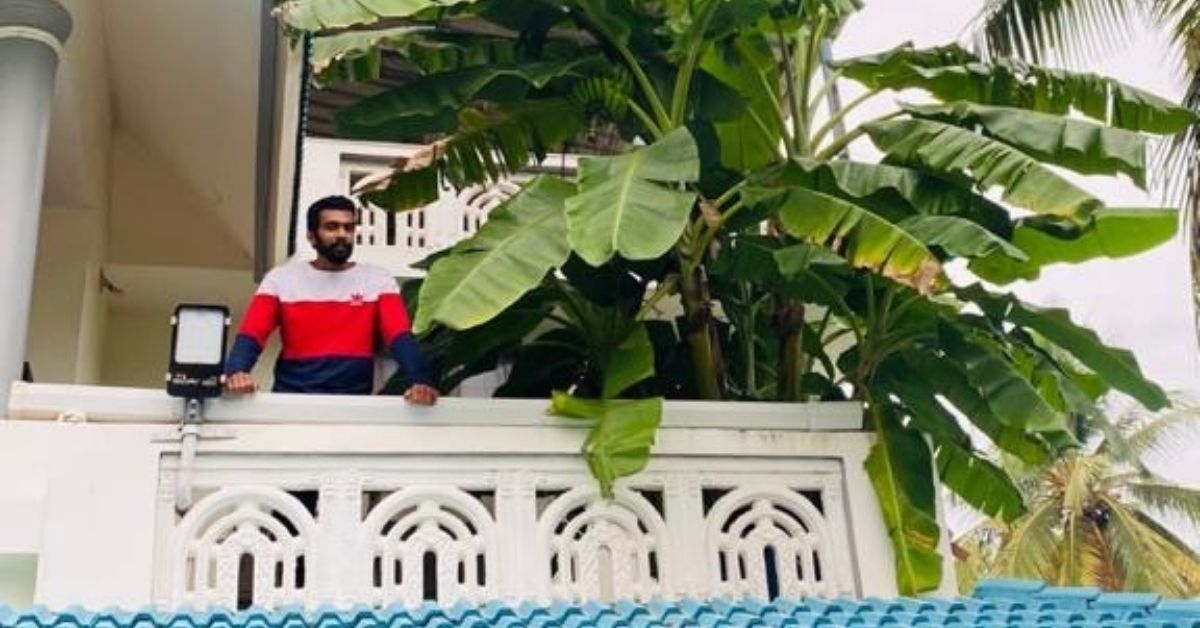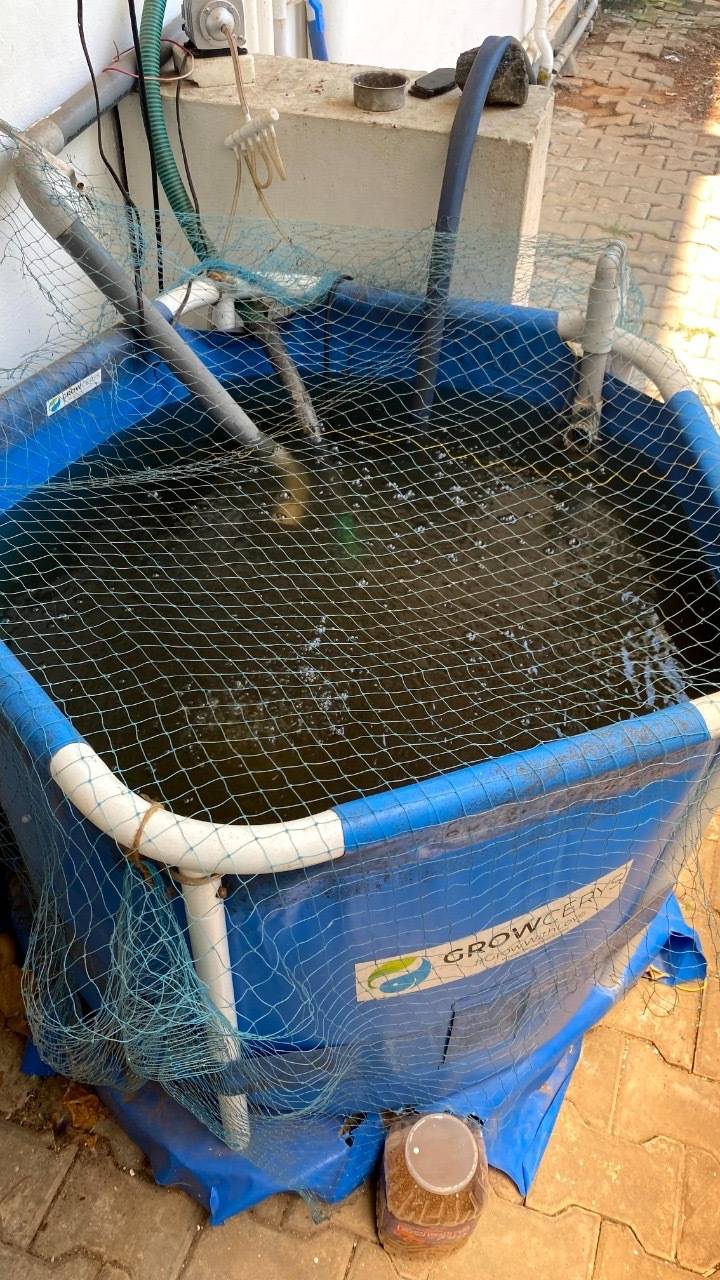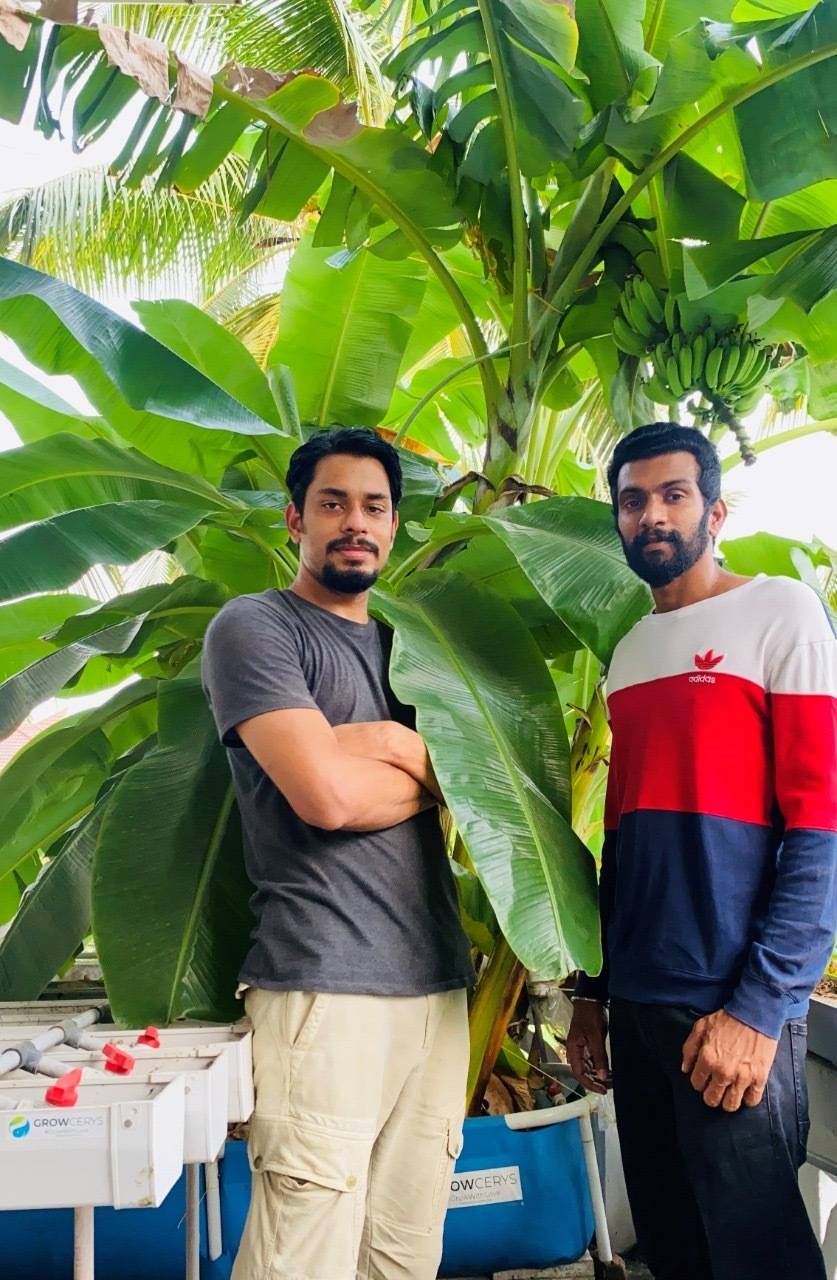Four years ago, John Varghese (30), a resident of Thrissur in Kerala, began growing a few plants, including tomatoes and brinjal, on his home’s terrace. He wanted to reduce his dependence on vegetables sold in markets. “I learned through friends that Kerala is a consumer state, and that it sources vegetables and fruits from other states. Owing to this, fresh produce often comes laced with pesticides and other harmful chemicals. So I started growing whatever I could myself,” says John.
Two years later, he began experimenting with aquaponics, wherein plants are grown in a soil medium, but nutrition and water are provided by fish, their waste, and the water they live in. “I chose aquaponics because I wanted to grow a wide variety and a larger quantity of plants,” John says.
Today, his little experiment has proven to be a success, and John is growing a variety of plants, including a banana tree on his terrace. He is also the owner of Growcerys, a Thrissur-based store that sells indoor plants.

A week-long process
In 2019, John decided to venture into aquaponics, and changed the setup of his terrace. He had an 800 litre grow bed made with help from a friend. “It was made using fabric coated PVC to ensure it could withstand wind pressure, as it would be placed on an open terrace. The grow bed also has draining holes in the bottom, provisions to insert mesh filters, and two holes on the side for the water pipe’s inlet and outlet,” says John.
This grow bed was placed on the terrace and filled with Quartz Silica sand sourced from Hyderabad. John chose this grade of sand because the soil medium should be clean and chemical-free. Otherwise, it would alter the PH levels of the water, which is harmful to both the fish as well as the plants. He chose to grow his plants in the sand instead of the commonly used medium, clay balls, because the former requires less maintenance.
“On the ground floor, I placed a 500-litre fish tank and started breeding Tilapia fish. They are also known as ‘poop fish’, because they produce large quantities of waste, which benefits the plants,” John says, adding that he currently has 80 fish in the tank, but the number can be altered depending on the number of plants that need to be watered.

From the fish tank, there is an outlet connected by a pipe leading to the grow bed on the terrace. This system is attached to a 60-watt motor that ensures water circulation takes place for half an hour, three times a day. In the grow bed, the fish water is first filtered through the sand, where the solid waste is collected at the surface. “Then the water passes through a fine mesh filter, which collects the sand particles. Finally, the clean water is directed back to the fish tank,” says John.
Growing a banana tree
Initially, John would grow leafy vegetables such as lettuce, red amaranthus, and coriander, as well as plants including tomato and brinjal. Four months ago, he saw the banana tree growing in his backyard garden, and wondered if he could grow this on his terrace using aquaponics.
“I cut a banana sapling and placed it in the sand. I gave it the same duration and amount of water as my other plants. Today, there is a full-grown banana tree that has produced a flower and a stalk of banana, which will ripen within the next few weeks,” says John, adding that he did not add extra nutrients, organic fertilisers or pesticides.

Neighbours and those walking past John’s house always stop for a few minutes and marvel at the banana tree on the roof. Some have even approached John to take a look at his terrace garden.
As part of his next experiment, John has planted a papaya tree. However, in the future, he hopes to understand the techniques better and help others set up an aquaponics farm in limited spaces.
No comments:
Post a Comment